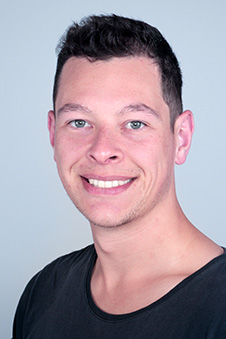The level of physical activity among young people in New Zealand varies widely between sociodemographic groups, indicating the need to think about how we promote physical activity, research from the University of Otago, Wellington shows.

Tom Bergen.
PhD student Tom Bergen (Ngāti Ruanui) studied the physical activity of 6,906 adolescents aged from 12 to 17 between 2017 and 2020 using data from the nationwide Sport New Zealand Ihi Aotearoa Active NZ Young People’s surveys.
His findings are published in the International Journal of Environmental Research and Public Health.
Mr Bergen analysed a range of factors related to the likelihood of teenagers continuing to be physically active in adulthood.
They included measures of the time spent on physical activities in the past week; the number of different activities and settings; the availability of physical activity options; the social support for being physically active; and their ‘physical literacy’, based on their knowledge, confidence, competence and motivation to be active.
Māori and Pacific young people ranked highly on average, with Māori scoring highest in current total weekly physical activity and Pacific adolescents scoring highly for physical literacy and social support to be active. Asian adolescents ranked the lowest across every category.
Mr Bergen says the finding that young Māori are the most physically active on a weekly basis is consistent with previous research and shows health interventions based on physical activity, like community-based taonga tākaro traditional Māori games, could be an effective way of improving health and wellbeing.
Younger adolescents scored better than older teens across all measures, with a key transition point appearing at 14–15 years of age.
Mr Bergen says younger people generally have more time allocated specifically to being active and experience different social and physical environments than older adolescents.
“It is also during this period that the focus of organised sport often transitions from ‘participating’ to ‘winning’, and the cost of sports club fees and equipment increases. Active transport behaviours change too, as older adolescents are expected to make their own way to school or work and start to become independent car drivers.”
Mr Bergen says male teens performed better than females across a range of categories. However, the difference was small, possibly indicating the success of recent and ongoing national initiatives aimed at increasing levels of participation for girls.
Gender-diverse adolescents and physically disabled teens also had lower scores than their peers, particularly in terms of their social support and physical literacy.
Teens from higher socioeconomic neighbourhoods in general tended to score better than those living in economically deprived areas.
Mr Bergen says the ways in which teenagers are physically active have a major influence on how active they are later in life.
“Identifying the reasons behind why and how teens conduct the physical activity they do is really useful in promoting future participation and optimising their chances of gaining lifelong wellbeing benefits.”
Mr Bergen is continuing to focus his research on finding the key connections between the physical activity needs of different sociodemographic groups so the most effective initiatives can be developed to improve future health and wellbeing.
“Achieving equity in physical activity participation among sociodemographic groups is needed to enhance New Zealanders’ wellbeing on a national scale.
“Our results show that a one-size-fits-all approach to improving participation rates is likely to have a limited impact. Instead, efforts to promote physical activity need to be wide ranging and tailored to address the needs of different groups.
“This may involve providing more support for locally-led initiatives, which give people the opportunity and resources to address their own physical activity needs.”
Sport NZ Group Manager, Play, Active Recreation and Sport, Jim Ellis says improving the physical activity and physical literacy levels of tamariki and rangatahi is core to the organisation’s strategy over the next decade.
“Active NZ shows us there is a drop-off in the activity levels of young people as they age, for a variety of reasons. Our core strategic focus is on reversing this trend, ensuring young people develop healthy, active habits that they carry with them for life.
“We’re pleased to see Sport NZ’s data being used to advance understanding of the many complex factors affecting activity levels in young people. We agree there is no one-size-fits-all solution and continue to work in partnership with sport, recreation and play organisations nationwide, along with locally-based community organisations, to find effective ways to influence change.
“Initiatives like Balance is Better, Healthy Active Learning and #itsmymove are part of this, supporting the sector to create quality experiences that help young people get active in ways that work for them.”
Publication details
Determinants of Future Physical Activity Participation in New Zealand Adolescents across Sociodemographic Groups: A Descriptive Study
International Journal of Environmental Research and Public Health
For more information, contact:
Tom Bergen
Department of Public Health
University of Otago, Wellington
Email berto954@student.otago.ac.nz
Michelle Pickles
Group Media Manager
Sport New Zealand Ihi Aotearoa
Email michelle.pickles@sportnz.org.nz
Cheryl Norrie
Communications Adviser
University of Otago, Wellington
Mob +64 21 249 6787
Email cheryl.norrie@otago.ac.nz